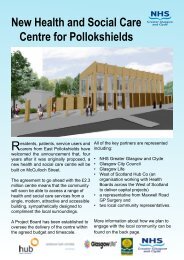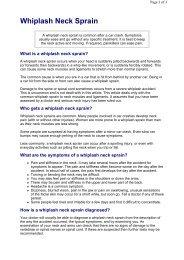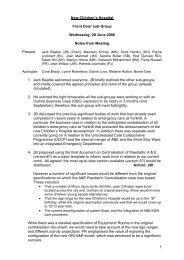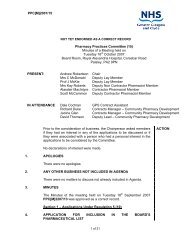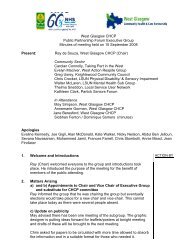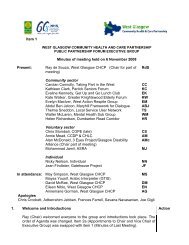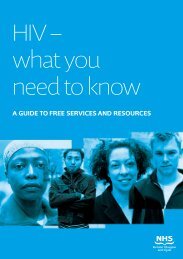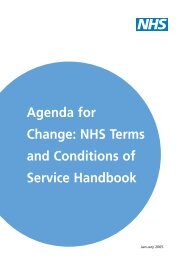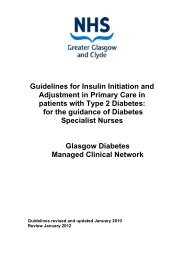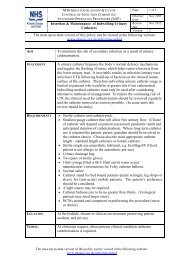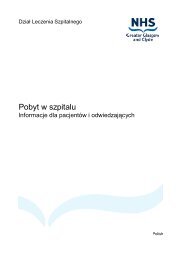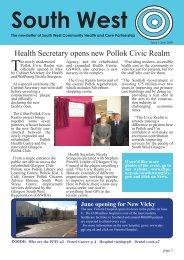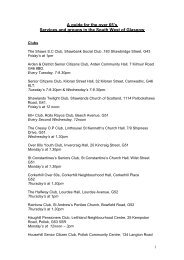View - NHS Greater Glasgow and Clyde
View - NHS Greater Glasgow and Clyde
View - NHS Greater Glasgow and Clyde
Create successful ePaper yourself
Turn your PDF publications into a flip-book with our unique Google optimized e-Paper software.
51<br />
extent as to whether they think these are patients that could be<br />
safely cared for.<br />
In addition to that we had GP’s going in<br />
over the course of about a week or two, going on *** receiving<br />
ward rounds with consultants <strong>and</strong> making a statement as to<br />
whether they felt these were the kind of cases that they could<br />
safely deal with in the hospital without requiring consultant<br />
input <strong>and</strong> again the figures actually came up round about the<br />
same kind of level, it’s between 75 <strong>and</strong> 80 percent of the<br />
current admissions could be safely dealt with by GP’s.<br />
So I feel that we have got quite a good<br />
body of evidence to support that <strong>and</strong> I’m confident that actually<br />
on a person with h<strong>and</strong>s on experience of dealing with these<br />
patients, that these are not patients that would pose particular<br />
problems.<br />
If anything we’ve effectively lowered the<br />
bar to some extent in the sense that we would be looking at<br />
transferring more patients to Paisley on the acute basis which<br />
makes this model of care more accessible to other doctors who<br />
would be interested in taking on that additional training <strong>and</strong> I<br />
think that would make it safer to be honest.<br />
But I certainly am confident we could<br />
sustain acute admissions around 70 to 80 percent.<br />
With respect to consultant involvement we<br />
have been very, very clear from the outset, as Helen will know,



